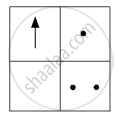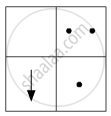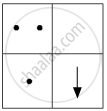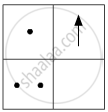Advertisements
Advertisements
Question
State the position of object, position of image, nature of image when: Convex lens is used in observing biological specimens.
Solution
Object is between F1 and O. Image is formed on the same side of lefts. Image is virtual; erect and magnified.
APPEARS IN
RELATED QUESTIONS
If you focus the image of a distant object, whose shape is given below, on a screen using a convex lens, the shape of the image of this object on the screen would be:

(a)
(b)
(c)
(d)
Draw a labelled ray diagram to show how a ray of light passes through a parallel sided glass block:
if it hits the glass block at an angle other than 90° (that is, obliquely to the glass block).
f the image formed by a convex lens is of the same size as that of the object, what is the position of the image with respect to the lens?
State any two uses of convex lenses.
What type of lens is shown in the diagram on the right? What will happen to the parallel rays of light? Show by completing the ray diagram.
Show by a diagram the refraction of two light rays incident parallel to the principal axis on a convex lens by treating it as a combination of a glass slab and two triangular glass prisms.
In the following cases, where must an object be placed in front of a convex lens so that the image formed is at infinity?
Where must a point source of light be placed in front of a convex lens so as to obtain a parallel beam of light?
 |
 |
The above images are that of a specialized slide projector. Slides are small transparencies mounted in sturdy frames ideally suited to magnification and projection since they have a very high resolution and a high image quality. There is a tray where the slides are to be put into a particular orientation so that the viewers can see the enlarged erect images of the transparent slides. This means that the slides will have to be inserted upside down in the projector tray.
To show her students the images of insects that she investigated in the lab, Mrs. Iyer brought a slide projector. Her slide projector produced 500 times enlarged and inverted image of a slide on a screen 10 m away.
a. Based on the text and data given in the above paragraph, what kind of lens must the slide projector have?
b. If v is the symbol used for image distance and u for object distance then with one reason state what will be the sign for `"𝑣"/"𝑢"` in the given case?
c. A slide projector has a convex lens with a focal length of 20 cm. The slide is placed upside down 21 cm from the lens. How far away should the screen be placed from the slide projector’s lens so that the slide is in focus?
OR
c. When a slide is placed 15 cm behind the lens in the projector, an image is formed 3 m in front of the lens. If the focal length of the lens is 14 cm, draw a ray diagram to show image formation. (not to scale)
Distinguish between:
Concave lens and Convex Lens
